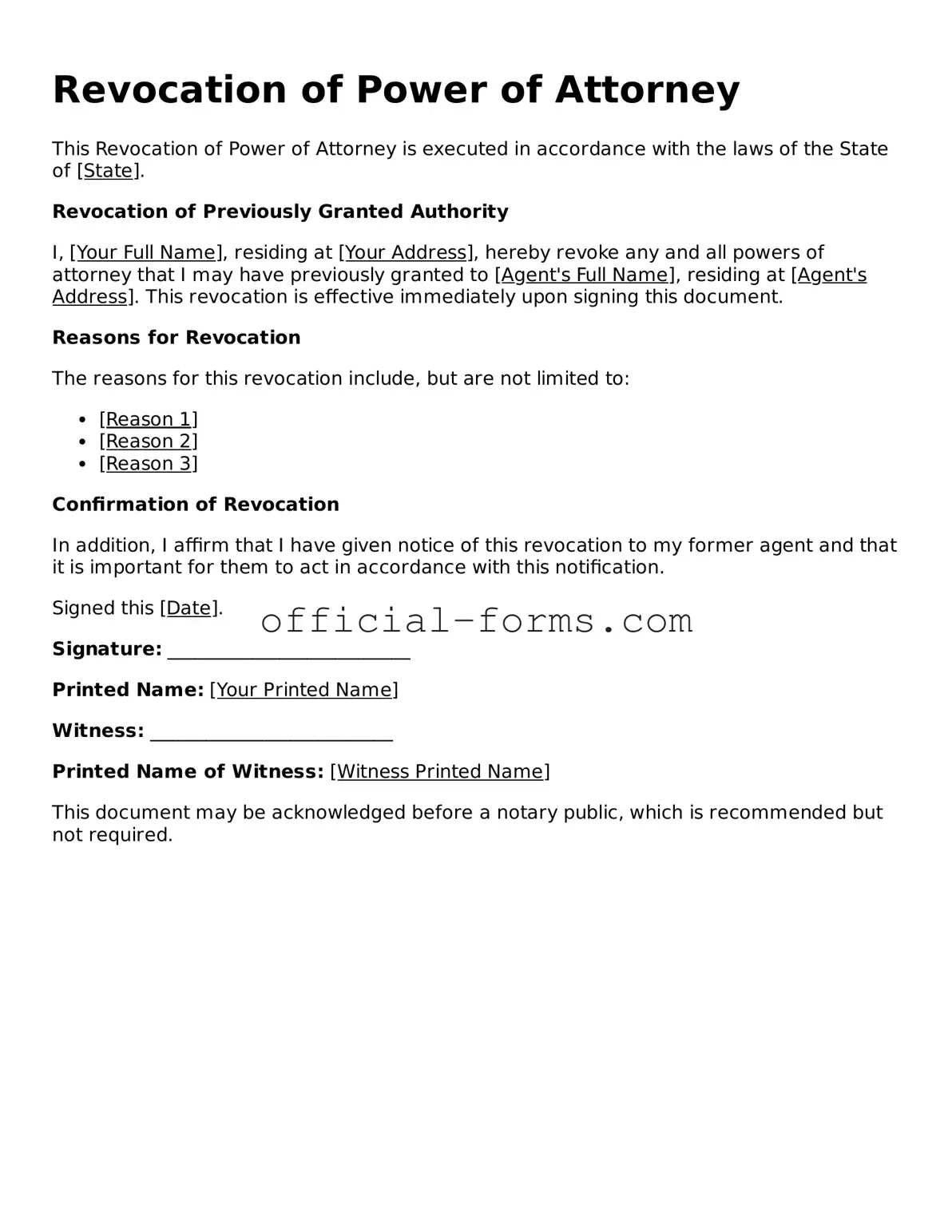Filling out a Revocation of Power of Attorney form can be a straightforward process, but many individuals encounter pitfalls that can lead to complications. One common mistake is failing to clearly identify the original Power of Attorney. Without specifying the exact document being revoked, confusion may arise, leading to potential legal disputes.
Another frequent error is neglecting to include the date of revocation. A clear date is essential as it establishes when the revocation takes effect. Without this detail, there may be ambiguity regarding the validity of the revocation, which could complicate matters later on.
People often forget to sign the revocation form. A signature is a crucial element that signifies intent. If the form is unsigned, it may not be recognized as valid, allowing the original Power of Attorney to remain in effect, despite the individual's wishes.
Inaccurate personal information is another mistake that can undermine the revocation. This includes misspellings of names or incorrect addresses. Such inaccuracies can lead to challenges in verifying the identity of the person revoking the Power of Attorney, potentially invalidating the document.
Some individuals may also overlook the requirement for witnesses or notarization. Depending on state laws, a revocation may need to be witnessed or notarized to be legally binding. Failing to meet these requirements can result in the revocation being deemed ineffective.
Additionally, individuals sometimes assume that simply verbalizing the revocation is sufficient. However, a verbal statement lacks the legal weight of a written document. To ensure clarity and enforceability, it is essential to provide a formal, written revocation.
Another mistake involves not providing copies of the revocation to relevant parties. After completing the form, it is crucial to distribute copies to anyone who had previously been granted Power of Attorney. This ensures that all parties are aware of the change and can act accordingly.
Some people may also forget to check for any specific requirements outlined in the original Power of Attorney document. Certain documents may have unique stipulations regarding revocation that must be followed to ensure validity.
Lastly, individuals sometimes fail to keep a record of the revocation. Retaining a copy of the signed and dated revocation form is vital for personal records. This documentation can serve as proof of the revocation in case any disputes arise in the future.
